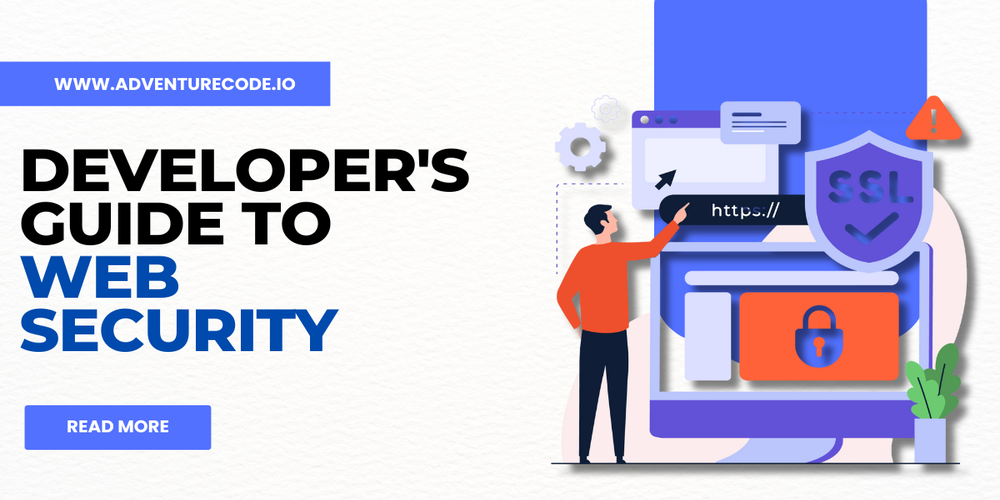Introduction to Web Security
In the ever-evolving world of web development, Web Application Security is not just an afterthought; it's a foundational component of building responsible, trustworthy applications. It refers to the methods and procedures programmers employ to shield web applications against unauthorized access, data breaches, malicious assaults, and other weaknesses. Attackers' techniques to take advantage of code, architecture, or server configuration weaknesses are becoming more sophisticated as websites and apps get more complicated. For developers, comprehending Web Security Best Practices is about designing robust, secure systems, not just about resolving flaws.
Why Web Security Matters?
Every day, sensitive data such as login credentials, financial records, and personal information passes through web applications. There may be serious repercussions if that data is compromised or made public, including monetary losses, harm to one's reputation, and legal consequences. Ignoring Secure Web Application Development can result in destructive assaults like SQL injection, cross-site scripting (XSS), or even complete system takeovers in an era where cyber threats are ever more complex. Vigilant development processes and Secure Coding Practices safeguard the company and its users, guaranteeing long-term trust and adherence to data protection regulations such as the CCPA and GDPR. Security is essential for developers to achieve both product dependability and professional excellence.
Key Principles of Web Security
1. Input Validation and Sanitization
Validating and sanitizing all inputs is a critical security measure that ensures data integrity and protects against common vulnerabilities, such as SQL injection and cross-site scripting (XSS). Sanitization eliminates or modifies potentially hazardous characters or code, whereas validation ensures that supplied data complies with standards and requirements. Developers should never trust users' input because any form field, URL parameter, or data entry point might be used to insert malicious content. A more secure and dependable user experience can be ensured by protecting apps through both client-side and server-side validation, as well as comprehensive sanitization.
2. Secure Authentication Methods
Protecting your application requires the use of Secure Authentication Methods. Never save credentials in plain text; use secure hashing methods like Argon2 or Bcrypt instead. Multi-factor authentication (MFA) can increase security and provide an extra layer of defense. Rely on reliable, well-maintained libraries and frameworks that adhere to Web Security Best Practices to provide strong and current protection rather than building your own authentication solution.
3. Use HTTPS and Secure Headers
Enforcing HTTPS using TLS certificates is crucial for encrypting data in transit. This keeps all client-server communications private and safe while guarding against man-in-the-middle and eavesdropping attacks. By instructing the browser to thwart threats like XSS, clickjacking, and other browser-based vulnerabilities, secure HTTP response headers such as Content-Security-Policy, X-Frame-Options, Strict-Transport-Security, and X-Content-Type-Options, in addition to using HTTPS, can improve Web Application Security.
4. Preventing XSS and CSRF Attacks
User-generated content should always be encoded or escaped before being shown on web pages to avoid Cross-Site Scripting (XSS). Anti-CSRF tokens should be implemented and validated for each request that changes state to prevent Cross-Site Request Forgery (CSRF). When set up correctly, several contemporary frameworks, including Django, Laravel, and ASP.NET, come with built-in defenses for Preventing XSS and CSRF Attacks, helping developers protect their apps from these common and harmful security risks.
5. Keep Dependencies and Libraries Updated
Updating dependencies and libraries is essential for preserving the Secure Web Application Development process. Use tools like OWASP Dependency-Check, Snyk, or npm audit to analyze third-party packages, as they may regularly create vulnerabilities. Keep yourself informed by monitoring changelogs and quickly applying patches. Remove unnecessary or outdated packages to reduce your attack surface and ensure your application receives the latest security patches and performance enhancements.
6. Role-Based Access Control (RBAC)
Role-Based Access Control (RBAC) ensures users can only access features and data appropriate to their roles, preventing unauthorized access. General users should never be allowed to access admin-only areas, for example. By establishing user roles and permissions precisely and verifying them on both the client and server sides, developers may lower the possibility of privilege escalation and keep the application's access structure safe and well-organized.
7. Log Security Events and Monitor Activity
Security event logging is essential for identifying and addressing possible threats. Note things like attempts to log in, unsuccessful authentication attempts, and unusual patterns of behavior. Utilize monitoring tools such as Splunk or the ELK Stack to examine these logs in real time and spot security problems early. To preserve security and privacy within your application, always ensure that logs are safely saved and do not contain sensitive user data.
8. Educate and Review Regularly
Security is an ongoing activity rather than a one-time solution. Regularly examine code, participate in security training, and use resources like OWASP, HackerOne, and official documentation to stay up-to-date with emerging vulnerabilities. Better code and safer apps result from a development culture that prioritizes Secure Coding Practices.
Conclusion
Although everyone shares responsibility for Web Application Security, developers are on the front lines. By following this Developer Guide to Web Security and adopting Web Security Best Practices, developers can create apps that users and organizations can trust. Security is about enabling confident, secure usage, not about locking down functionality. Investing in Secure Web Application Development now will protect your work and users for years to come. Make Web Security Best Practices the norm, not the exception, and continue to build with a security-first mindset.






